|
PRISON LIFE
|
 |
|
The German prisoners did what was necessary to make life as tolerable as possible
at the camp. They printed their own newspaper entitled 'Stobsiade', literally 'news from Stobs.'
Twenty five issues were printed through until the end of the hostilities, with
4,000 copies being printed of each issue.
|
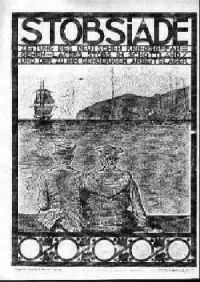
|
With the prisoners coming from all walks of life, certain professions were
able to ply their previous trades in the camp. Former teachers set up a school in a hut with a wide variety of
subjects being taught, with up to 70 students using the facilities at any one time.
The prisoner's compound seems to have been well appointed, housing as it did
a school, a library with over 2,700 volumes and a hospital with its own operating theatre.
|
|
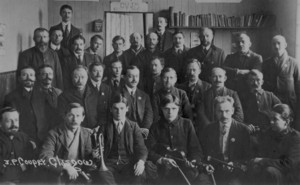
|
Professional musicians were given instruments donated by the Y.M.C.A. and they
formed a 13 piece camp orchestra which was said to be 'the equal to the best Guards band in London' and there was
also a brass band.
|
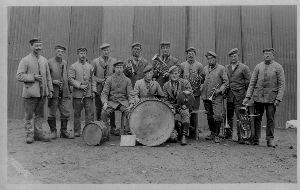
|
| |
|
|
|
The prisoners also traded in trinkets, selling their wares mainly to the camp
guards and Hawick population. These items included wooden and animal bone carvings, paintings, and sketches, some
of which remain today.
|
|
One prisoner wrote;
'anyone who has spent long winter evenings here, anyone who has
gazed longingly through the barbed wire fence into the distant blue sky in summer, knows how important a lecture,
a concert, a play, a competition is for our mental and physical well-being.'
|
|
Despite the attempt at trying to make their internment as focused and positive
as possible, ultimate freedom was denied to the men. Even in summer Stobs can be a bleak place and it was not surprising
that some of the prisoners became depressed, leading in some cases to the abandonment of hope and life itself.
|
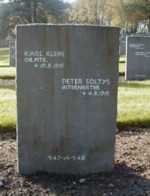
On the 19th September, 1915, Karl Klein was found dead in the prisoner's hospital
having hanged himself with his leather belt which he had attached to one of the windows. He had been one of the
men captured from the Blucher. Klein was 26 years of age and married.
|
|
The following June, Doctor Walter Gellhorn was found dead in a hospital
room, morphine poisoning being stated to be the cause of death. Circumstances pointed to it being a deliberate
case of suicide.
|
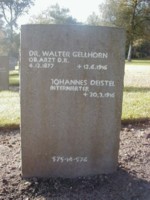
|
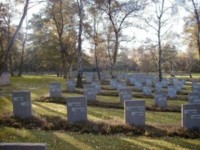
In 1962, after the closure of the camp, the bodies were removed to the German Military Cemetery
at Cannock Chase in Staffordshire.
|
|
Both of these men were buried in a specially consecrated prisoner's cemetery which was opened
just to the left of the main entrance to the camp in some woodland above the main railway. By the end of the war
it provided the final resting place for the bodies of 35 soldiers, 4 sailors and 6 interned German civilians who
had died at the camp from a variety of causes.
|
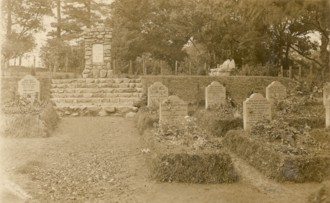
|
|
The cemetery's central cairn was erected by the prisoners who had held a competition for the
most appropriate design, funding for the project coming from a performance of Strauss and Offenbach by the camp
orchestra on Easter Monday, 1917. The monument was erected on a concrete base which was raised slightly from the
surrounding graves and was reached by six stone steps. It was a simple construction standing over two metres high
with a granite insert inscribed with the words 'To our comrades who died far from home.'
Flowers, saplings and young fir trees were planted around the area and the final touches were made with the positioning
of two stone benches beside the cairn.
|
|
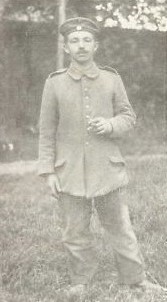
Sebastian Bichler, 1st Bavarian Reserve Infantry Regiment, native of Starberg, who died at
Stobs on June 22nd, 1919, aged 33 years
|
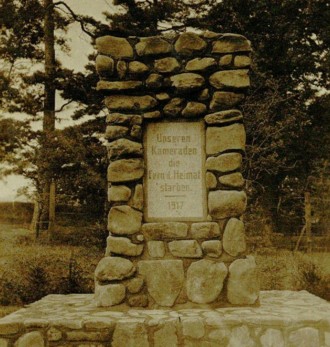
Cairn overlooking the German Cemetery
|

POW's sketch of the camp
|
| |
|
|
| |
|
|
|
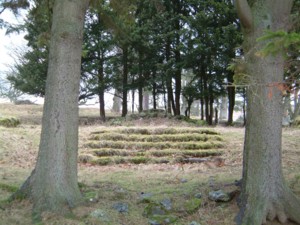
|
All that remains at Stobs now are a few yew trees and the fallen stones from the memorial
cairn which once stood sentinel over the graves.
|
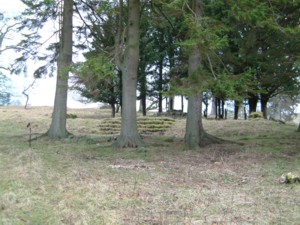 |
|
|
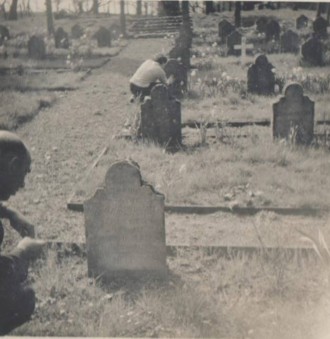
|
Malcolm Mcdonald has been kind enough to allow me to post these photographs of the German
Cemetery at Stobs which were in his late Mother's photo collection.
|
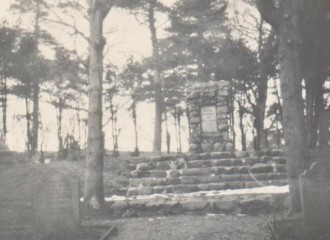
|
| |
|
|
 |

|

|